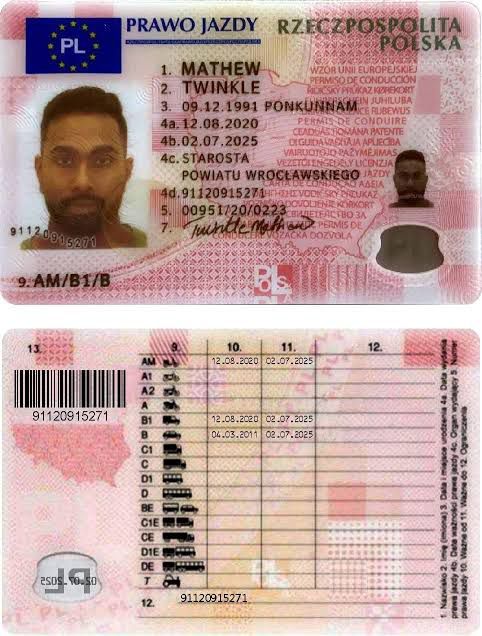Driving License Learning Online: A Comprehensive Guide
In today's busy world, the requirement of having a driving license can not be underestimated. The age of digitalization has actually changed the method people can prepare for their driving tests. Online learning platforms now offer a practical and effective ways of getting important knowledge and skills required to pass the driving test. This article will look into the various elements of driving license learning online, including its advantages, how it works, and what to expect.
The Evolution of Driving License Education
Traditionally, getting a driving license involved participating in physical classroom sessions together with behind-the-wheel training. Trainees needed to manage traveling to classes and getting practical experience, which might be both lengthy and challenging. However, the introduction of online learning has revolutionized this procedure, making it more available and flexible.
Advantages of Learning to Drive Online
Learning to drive online deals various benefits, including:
- Flexibility: Learners can prepare for their tests at their own pace and convenience, without the stiff scheduling generally related to standard classes.
- Cost-Effectiveness: Online courses frequently come at a lower expense compared to in-person instruction, making it an appealing choice for lots of.
- Access to Resources: Comprehensive online courses often include simulations, quizzes, and instructional videos that enhance the learning experience.
- Updated Information: Online materials are often upgraded more frequently, ensuring learners receive the most current information on traffic laws and guidelines.
- Self-Paced Learning: Students can examine areas they discover difficult and progress through the product as they master each topic.
How Online Driving Education Works
Many online driving courses are structured to offer a thorough learning experience. Below are the common parts of an online driving course:
1. Register in a Course
- Trainees select an online driving school that matches their needs and register for a course.
2. Gain Access To Study Materials
- Upon registration, learners get to a portal containing study products, including multimedia content, practice tests, and resources on state-specific traffic laws.
3. Research Study and Complete Instructional Modules
- Courses are broken down into modules that learners must complete. Many platforms use video lectures, interactive tests, and reading products.
4. Take Practice Tests
- Many online learning platforms offer chances to take practice tests, mimicking the real composed driving test. Katelyn Webb assists students assess their preparedness for the genuine exam.
5. Behind-the-Wheel Training
- While online courses focus on theoretical knowledge, trainees will still need practical driving practice. A lot of platforms suggest partnering with an experienced driver or enrolling in a regional driving school for hands-on training.
6. Schedule the Driving Exam
- Once trainees feel positive in their knowledge and skills, they can schedule a consultation for the written and driving tests with their regional automobile department.
Table: Comparison of Online vs. Traditional Driving Learning
| Feature | Online Driving Courses | Standard Driving Schools |
|---|---|---|
| Flexibility | High (study at own rate) | Limited (set class schedule) |
| Cost | Usually lower | Typically higher |
| Learning Format | Self-directed multimedia | Instructor-led lectures |
| Research study Materials | Upgraded routinely | Might not reflect the most recent laws |
| Behind-the-Wheel Guidance | Needs external arrangements | Included in the bundle |
What to Expect from Online Driving Courses
While each online driving course may differ, students can usually expect the following:
- Comprehensive Curriculum: Courses cover important topics such as traffic laws, roadway indications, safe driving practices, and protective driving techniques.
- Interactive Learning: Many online courses implement gamification strategies to make learning enjoyable and engaging.
- Assistance: A reliable online driving school ought to supply access to trainers through e-mail, chat, or phone for additional support.
Often Asked Questions (FAQs)
1. Is online driving education acknowledged by all states?
While lots of states accept online driving courses for the written portion of the exam, policies may vary when it comes to the behind-the-wheel training. It is vital for students to verify their state's particular requirements.
2. Can I learn to drive without a physical class?
Yes, you can complete the theoretical part of driving education completely online; however, practical driving lessons with a knowledgeable adult or a certified instructor are vital.
3. Are online driving tests the same as in-person tests?
The format of online practice tests frequently looks like the real tests, however they may not always be similar to the state-specific driving exams. Nevertheless, they serve to acquaint learners with the test structure and material.
4. Is online driving education suitable for all age groups?
Yes, online driving education is available and helpful for students of all ages, whether young people preparing for their very first driving test or older adults seeking to refresh their abilities.
5. What takes place if I fail the online practice tests?
Stopping working a practice test prevails and should not prevent students. Most online courses permit unlimited attempts to retake tests and tests till a passing grade is attained.
Learning to drive online provides a viable choice for numerous individuals aiming to get their driving license in a versatile and cost-effective way. With the advancement of online education, people can now get ready for their driving tests with ease and confidence. As students browse this self-paced journey, they can gain from detailed resources, engaging material, and the convenience of handling their own schedules. Ultimately, whether selecting online education or a traditional technique, the key remains the commitment to safe driving practices and compliance with local regulations.

